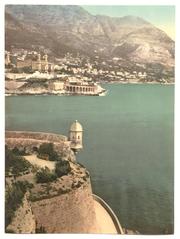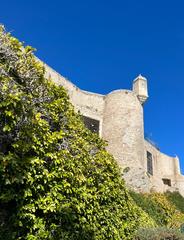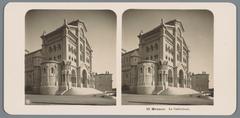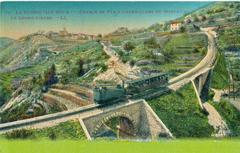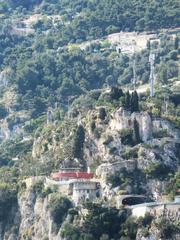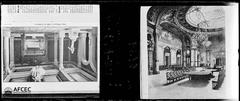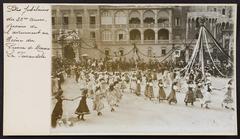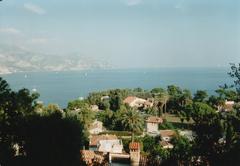
Fort Antoine Monaco: Complete Visitor Guide, History, and Ticket Information
Date: 14/06/2025
Introduction
Fort Antoine, perched on the northeastern tip of Monaco-Ville, stands as a remarkable testament to Monaco’s historical resilience and cultural transformation. Once a formidable military outpost safeguarding the principality’s shores, today it is celebrated as a unique open-air theater and one of Monaco’s most cherished cultural venues. This comprehensive guide covers everything you need to know for a memorable visit: from Fort Antoine’s storied past and architectural features to practical information on visiting hours, tickets, accessibility, and travel tips.
Contents
- History and Origins
- Architectural Features and Transformation
- Cultural Significance
- Visiting Hours and Ticket Information
- Accessibility and Visitor Tips
- Performance Experience
- Nearby Attractions
- Frequently Asked Questions (FAQ)
- Summary and Final Advice
- Sources
History and Origins
Fort Antoine was originally commissioned in 1706 by Prince Antoine I of Monaco as a strategic military fortification during a period of regional turbulence. Designed by the Italian architect Giovanni Maraldi, the fort was built atop the Rock of Monaco to provide extensive surveillance over the Mediterranean, protecting the principality from maritime threats. Its star-shaped layout, robust stone walls, and angular bastions reflected prevailing military architecture of the era (mexicohistorico.com).
The fort’s role as a military bastion diminished over time as warfare evolved. During World War II, Fort Antoine suffered extensive damage and was destroyed in 1944. Recognizing its historical and cultural value, Prince Rainier III spearheaded its reconstruction in 1953, adapting the site into an open-air amphitheater that preserves its martial heritage while embracing new civic functions (monaco-tribune.com).
Architectural Features and Transformation
Military Features
- Star-shaped layout: Maximized defensive coverage and fields of fire.
- Thick stone walls and bastions: Provided robust protection.
- Watchtower and cannon emplacements: Enabled surveillance and defense.
- Central courtyard: Once served as a staging area for troops and supplies.
- Pyramid of cannonballs: Symbolic focal point commemorating the fort’s martial origins.
Amphitheater Conversion
The 1953 reconstruction transformed Fort Antoine into an open-air amphitheater inspired by ancient Roman theaters. Key features include:
- Semi-circular stone seating: Accommodates up to 350 spectators, offering clear views of the stage and panoramic vistas of the Mediterranean (planetware.com).
- Open-air design: Performances are held under the stars; usage is typically limited to the warmer months.
- Natural landscaping: Pittosporum hedges serve as barriers, blending greenery with historic stonework (monaco-tribune.com).
- Ceremonial cannons: Occasionally fired during special events, maintaining a living link to the fort’s past (izi.travel).
Cultural Significance
Fort Antoine’s journey from a military outpost to a vibrant cultural venue mirrors Monaco’s evolution from fortress to cosmopolitan hub. Since its conversion, the amphitheater has hosted a diverse range of events, including French-language theater, symphony concerts, and poetry readings—particularly during the annual summer season from June to August (planetware.com).
The fort is also a platform for emerging talent, with initiatives such as “Scène Ouverte – Les Talents du Fort,” inviting young artists to perform and engage the community (news.mc). This adaptive reuse highlights Monaco’s dedication to honoring its heritage while embracing the arts.
Visiting Hours and Ticket Information
- General Visiting Hours: Fort Antoine is open daily, generally from sunrise to sunset. Admission is free outside of scheduled performances (Visit Monaco).
- Performance Schedule: The summer season, June–August, features theater, music, and dance events, typically starting at dusk.
- Tickets: Required only for performances. Prices usually range from €10–€30. Many events are free, but advance booking is recommended due to limited capacity (The Crazy Tourist).
- Guided Tours: Available during the summer by advance reservation through Monaco’s tourism office.
Accessibility and Visitor Tips
- Access: The fort is a short, uphill walk from Monaco-Ville’s main attractions and public transport stops (bus lines 1 and 2). Parking is limited; public transportation and walking are recommended (Triphobo).
- Mobility: Some areas are accessible, but uneven surfaces and steps may pose challenges for visitors with limited mobility.
- Facilities: Minimal. Restrooms and refreshments are not available on-site; plan accordingly.
- Attire: Smart-casual recommended for performances. Bring a light jacket for cool evenings and sun protection for daytime visits.
- Best Time to Visit: Late afternoon and early evening, especially during the summer for both sightseeing and performances.
Performance Experience
Fort Antoine’s amphitheater offers an intimate and enchanting setting, with excellent acoustics and spectacular sea views. The ambiance is particularly magical at sunset, and the proximity to performers ensures an engaging cultural experience. Most events are in French, but the dramatic setting and universal appeal of music and theater welcome all visitors (Evendo).
Nearby Attractions
- Prince’s Palace: Royal residence offering tours and the changing of the guard.
- Oceanographic Museum: Renowned marine science center.
- Saint Nicholas Cathedral: Resting place of Monaco’s royal family.
- Monaco Old Town: Explore medieval streets and squares.
- Monaco’s Ramparts: Walk along ancient walls for additional history and views (Tourist Secrets).
Frequently Asked Questions (FAQ)
What are Fort Antoine’s visiting hours?
Open daily from sunrise to sunset, except during scheduled performances.
Are tickets required?
Entry is free for casual visits; tickets (often free) are required for performances and must be reserved in advance.
Is Fort Antoine accessible for people with disabilities?
Partial accessibility; some areas involve steps and uneven surfaces. Contact the venue in advance for assistance.
Are guided tours available?
Yes, during the summer season by reservation through the tourism office.
What amenities are on-site?
Minimal. No food/drink vendors or restrooms; nearest facilities are in Monaco-Ville.
Summary and Final Advice
Fort Antoine is a shining example of Monaco’s commitment to preserving its historical legacy while fostering a vibrant cultural life. A visit to this fortress-turned-theater offers more than just scenic views—it provides a journey through Monaco’s rich past and dynamic present. Attend a performance under the stars, explore the ramparts, and immerse yourself in an authentic Monegasque experience. For up-to-date information on visiting hours, ticketing, and events, consult official resources and download the Audiala app for seamless planning.
Sources
- Fort Antoine Monaco: Visiting Hours, Tickets, and Historical Insights, 2025, (mexicohistorico.com)
- Fort Antoine Monaco Theatre Listing, 2025, (monaco-tribune.com)
- Fort Antoine Historical and Cultural Guide, 2025, (planetware.com)
- Fort Antoine Cultural Insights, 2025, (izi.travel)
- Young Artists at Fort Antoine, 2025, (news.mc)
